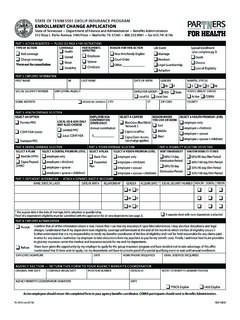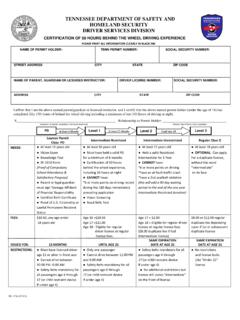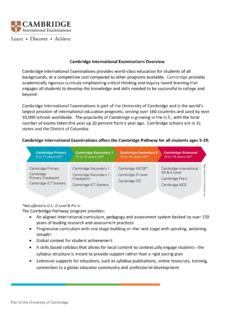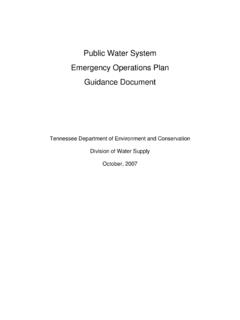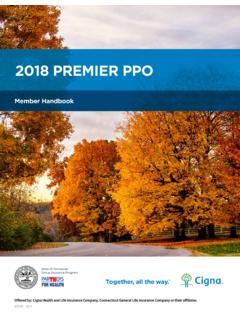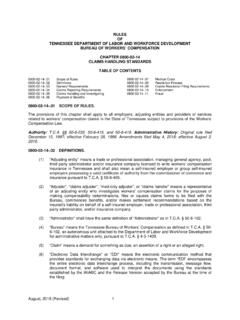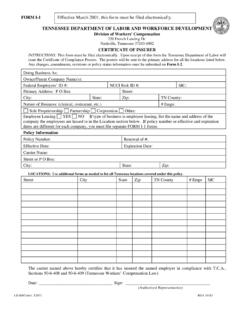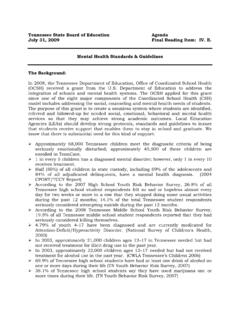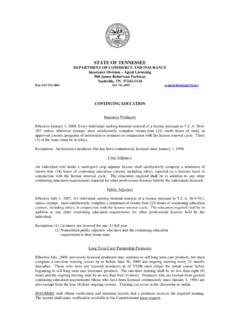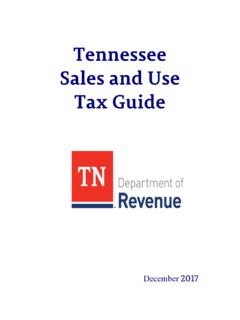Transcription of Response to Instruction and Intervention Framework
1 Response to Instruct ion and Intervention Framework Table of Contents Acknowledgements 1 Foreword from Commissioner McQueen 3 Intent of the Framework and Overview of Refinements 4 Introduction 5 RTI Implementation Timeline 11 guiding principles 13 Component 1: General Procedures 14 General RTI Information District/School Level Teams Universal Screening Procedures Data-Based Decision Making Procedures Students Entering Mid-Term Contact with Parents Procedures to be used with English Learners Component 2: Tier I Procedures 28 Description of Length of Core Curriculum Instructional Practices Ongoing Assessment Data-Based Decision Making Procedures Professional Learning Provided for Tier I Instruction Fidelity Monitoring Component 3: Tier II Procedures 70 Description of Tier II Interventions Tier II Configuration Progress Monitoring Procedures in Tier II Data-Based Decision Making Procedures Professional Learning Provided for Tier II Interventions Fidelity Monitoring Component 4.
2 Tier III Procedures 80 Description of Tier III Interventions Tier III Configuration Progress Monitoring Procedures in Tier III Data-Based Decision Making Procedures Professional Learning Provided for Tier III Intervention Fidelity Monitoring Consideration for Special Education High School Tier III Intervention Courses Component 5: Special Education Eligibility Procedures 94 Special Education Referral Procedures Progress Monitoring Procedures Special Education Referral Information Components of Special Education Evaluation/Re-evaluation Specific Learning Disabilities Eligibility Criteria Exclusionary/Rule-Out Factors Eligibility Determination Re-evaluations Transfers Private/Home School Data-Based Decision Making Procedures Parent Request for Evaluation Fidelity Monitoring Progress Monitoring and Intervention Procedures in Special Education Dismissal from Special Education Program Evaluation Glossary 105 United States Department of Education, Office of Special Education and Rehabilitative Services (OSEP)
3 , Memo 11-07 117 References 120 Acknowledgements We acknowledge and would like to thank all the stakeholders that read drafts, gave feedback and guidance, as well as those who provided research, materials, and support to the RTI Framework . Cindy Ables, Supervisor of Reading and Language Arts, Lincoln County Schools Alan Coulter, , Consultant Susan Dold, Literacy Specialist, Memphis City Schools Nancy Youree Duggin, Consultant Norma Gerrell, Director, Northwest Core Center Marianne Gilbert, Curriculum Specialist K-5 Literacy, Williamson County Schools Tie Hodack, Director of Instructional Programming, Division of Special Populations Aimee Holt, , Consultant Mia Hyde, Coordinator of Reading Content and Resources, Division of Curriculum and Instruction Stacy King, Common Core Specialist, Greeneville City Schools Jennifer Koehler, , Consultant Jennifer Maynard, , Consultant Theresa Nicholls, Evaluation Services Coordinator, Division of Special Populations Holly Paczak, , Consultant Robert H.
4 Pasternack, , NCSP, Consultant Sheri Roberson, Supervisor of Special Education, Putnam County Schools Janet Sexton, Supervisor of Reading/Language Arts, Knox County Schools Tammy Shelton, Executive Director of Content and Resources, Division of Curriculum and Instruction Mark R. Shinn, , Consultant Sherry Shroyer, Principal, Bradley County School Nathan Travis, Director of Data Services, Division of Special Populations Charlotte Woehler, Coordinator of Content and Resources, Division of Curriculum and Instruction This list acknowledges those who provided feedback for the 2013 draft of this manual. 1 Members of the Tennessee Department of Education Tier I Working Group 2016 Kaneal Alexander, , Director of Educator Training, Division of Teachers & Leaders Elizabeth Alves, Assistant Commissioner, Early Learning and Literacy Ren Diamond, Executive Director of Educator Effectiveness, Division of Teachers & Leaders Becky Cox, Executive Director of Reading, Office of Reading Karen Babbs Hollett, Consultant Mia Hyde, Executive Director, First TN Center of Regional Excellence Vicki Kirk, , Deputy Commissioner and Chief Academic Officer, Tennessee Department of Education Ryan Mathis, Director of Outreach, Partnerships, and Special Projects - Division of Special Populations Robbie Mitchell, Executive Director of Academic Strategy and Operations.
5 Office of Chief Academic Officer Stephanie Nails, , Director of Academic Support, Centers of Regional Excellence Theresa Nicholls, , NCSP Executive Director, Office of Special Populations Sandy S. Qualls, Coordinator of Early Literacy, Office of Content and Assessment Design Victoria J. Risko, Literacy Consultant Professor Emerita, Vanderbilt University Tammy L. Shelton, Senior Executive Director, Content & Assessment Design Zachary Stone, Research Analyst, Division of Data and Research Luisa Wilsman, Director of Special Projects, Academic Strategy and Operations Casey Haugner Wrenn, Executive Director of Student Readiness & Early Postsecondary, Division of College, Career & Technical Education 2 3 Foreword Dear Educators, Several years ago, we embarked on a journey together toward a new model for Instruction in Tennessee.
6 That model, Response to Instruction and Intervention (RTI ), recognizes the importance and power of high-quality, rigorous, on-grade-level Instruction for all students through Tier I and also provides structured support that is tailored to meet students individual needs through Tier II and III interventions. Our mission is to ensure that all students receive the Instruction and focused time necessary to be successful in and beyond K-12. Additionally, we are working toward our state goals of ensuring at least 75 percent of students are reading on grade level at the end of third grade by 2025 and that the majority of our students are going to postsecondary and earning college and career credentials. This revised manual acknowledges that we learn best from the educators responsible for implementing an initiative.
7 Feedback from teachers, principals, and district leaders has shaped the revisions and updates in this manual. Some of these refinements include guidance around using multiple sources of data for the universal screening process and the inclusion of more detail on Tier I instructional practices, especially in early reading. Thanks to the many educators and administrators who contributed time and guidance as we made these refinements. Response to Instruction and Intervention is an important focus area for the department: the success of our strategic plan, Tennessee Succeeds, and the success of the statewide Read to be Ready campaign hinge on continuously refining RTI to improve outcomes for all students, especially those at risk of academic failure. We believe that early literacy matters and that excellent Tier I Instruction can help more young students become proficient and joyful readers.
8 We believe that it is never too late to address students needs and to increase their likelihood of career and postsecondary success. Most importantly, we believe that all means all: All students deserve high-quality Tier I Instruction ; all students can benefit from Intervention and enrichment; and all students can graduate from high school with the knowledge and skills to embark upon their chosen path in life. Since 2013, the department has provided a variety of presentations, trainings, and opportunities for feedback related to RTI implementation through the work of multiple divisions aligned around a common goal of ensuring all students are growing. Our CORE offices in particular worked closely with districts in different stages of implementation and have been an invaluable support in facilitating RTI work at the local level.
9 We plan to continue our regional support of districts throughout the coming years to continuously improve RTI and share the best practices. At the start of any new program or initiative, we feel excited about its promise. While we have moved beyond the new stage with RTI , I remain both excited and even more confident that RTI is the right path for Tennessee to meet the needs of all of our students. Thank you for sharing this work with us and for continuing to grow and solve challenges on behalf of our students. With appreciation, 4 Dr. Candice McQueen 5 s the foundation elivered to all is where students provides ffective Tier I up and small e-based se try ho Sp pat growt delivere intensive the RTI m and is not ex Intent of the Framework We are pleased to share this updated manual for Response to Instruction and Intervention (RTI ), which is Tennessee s Framework for teaching and learning that begins with high-quality, differentiated Instruction throughout the day and emphasizes intervening with students when they first start to struggle to avoid prolonged academic difficulties.
10 The goal of this manual is to support educators and empower districts in their continued implementation of RTI and to ensure that you have the structure and resources necessary to provide all students with access to and support for reaching high standards and expectations. The Tennessee State Board of Education approved Special Education Guidelines and Standards regarding evaluations for Specific Learning Disabilities (SLD). The path to identification moved away from a discrepancy model, sometimes called a wait to fail approach, and since July 1, 2014, the RTI model has been our statewide approach to identifying students with SLDs. The Special Education Guidelines and Standards require all districts and schools to use RTI to determine the eligibility of students to receive special education services for SLDs; however, identification is not the sole purpose of RTI.
